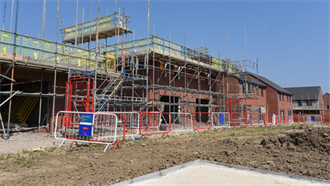There is no real estate deal that will not be able to find financing in Europe now because borrowers have such a wide range of options, according to experts.
‘I have not seen a single sensible proposal that could not get financing,’ said Alexander Fischbaum, managing director, AF Advisory. ‘If you have the equity expertise and you can explain your business plan to the lender, you can get pretty much everything financed, at a price.’
Fischbaum was speaking at the PropertyEU Debt Finance & Investment Briefing held at Mipim last week.
The beauty of the current diversified market is that money comes out of different capital pools, he said. It is a competitive market with many banks and other lenders present, which increases liquidity but depresses the margins. Five or six years ago, said Fischbaum, ‘it was a complete lender’s market, but now it is very much a borrower’s market.’
____________________________________________________
Also see, Interest rate hikes pose biggest risk for
real estate debt borrowers
____________________________________________________
UK market
In the UK, for example, ‘non-bank lenders have taken a 25% share of origination, and this provides a lot of additional stability to the market,’ said Christoph Wagner, director of debt strategies, origination & structuring, TH Real Estate.
‘There is a place for every type of lender in this market,’ said Assem El Alami, head of REF, international key accounts and syndication, Berlin Hyp. ‘The system has become much more sophisticated.’
This trend will continue, said Fischbaum: ‘The debt market will become more sophisticated and so will the banks. They are skilling up, becoming more specialised and starting to cooperate. Borrowers are becoming receptive to having two financing parties, they know you cannot just go to one bank for everything any longer.’
Things have really changed since 2012 when AEW started debt initiatives, said Cyril Hoyaux, head of debt funds management, AEW France: ‘Back then we had to convince the banks, they saw as an alien competitor but then realised it was more of a partnership and funds like us could be involved in the structure of the debt and the pricing.’
As for investors, there are two types who are interested in debt, said Wagner: the first type are those who want to replace a fixed-income allocation that is very low-yielding in the current environment with something that is higher-yielding.
Positive exposure to real estate debt
The second type are those investors who want to use commercial real estate debt as a different way to get exposure to the sector, with capital protection and an income element. ‘I continue to see strong interest from the second group of people,’ he said. ‘People like the income element, probably because we are in mid-to-late cycle now. Investing in debt continues to be attractive.’
Investors’ expectations vary, depending on what allocation they are coming out of, said Wagner: ‘Some people are happy to live with a 3% coupon, senior debt, low risk, low returns, others see debt as an alternative to direct property investment and want double-digit returns for their capital.’
The market is in a healthy state, said Wagner: ‘We are seeing good continuity, underwriting discipline and good structuring in the market, so we hope it will continue.’


































